-
November 11, 2013 Sabatini Building, Auditorium
Session 1. Video Condition
David Cronenberg. Videodrome
Film, 1982. In English with Spanish subtitles, 87’
Using conspiracy as an explanation for the present is a common mechanism in a cinema which, according to Fredric Jameson, is incapable of describing the powers and institutions of the new political scene. In Videodrome, Cronenberg plays a part in this situation, showing how a sect seeks to gain control by broadcasting television programming that features violence and pornography, and that not only affects the viewers' desires but also their perception of the world. The ideas of simulation, implosion or crisis of the real, which are predominant in this decade, appear in this film. At the same time, Videodrome describes a paradox: film approached from the perspective of video, or video, the decade's most significant medium, introduced through film. -
November 14, 2013 Sabatini Building, Auditorium
Session 2. Parodies of the subject
1980s television proposals
Jaime Davidovich. The Live! Show
Video, 1979-1984. In English with Spanish subtitles. 40’
Dara Birnbaum. MTV Artbreak
Video, 1985-1987. In English, 30’’
Doug Hall, Chip Lord y Jody Procter. The Amarillo Tapes
Video, 1980. In English with Spanish subtitles, 25’52’’
General Idea. Shut the Fuck Up
Video, 1984. In English with Spanish subtitles, 14’
Antoni Muntadas. Video Is Television?
Video, 1989-1990. 5’34’’
Television, the protagonist of a large part of the associative and guerrilla experiences of 1970s artistic practices, becomes a homogenizing medium in terms of information and audiences during the 1980s. This session is dedicated to analysing how different artists negotiate this idea. Artists show a fascination for the immediacy, massive reception and new formats offered by television, and at the same time they reproduce the stereotype of a satirical and unidimensional subject trapped in the television spectacle. Thus, collaborations with general networks, such as those undertaken by Dara Birnbaum, Richard Prince and Lynda Benglis with MTV, end in frustration, while the experiences such as those of General Idea or Jaime Davidovich criticize the medium, appropriating its logic. Both cases anticipate a new territory, one that is complex and inevitable: the relationship between art and cultural industries. -
November 18, 2013 Sabatini Building, Auditorium
Session 3. The artist of the cynical reason
Fischli & Weiss. The Least Resistance
Video, 1980-1982. In German with Spanish subtitles, 30’
Andrea Fraser. Museum Highlights: A Gallery Talk
Video, 1989. In English with Spanish subtitles, 29’
Martin Kippenberger. Entrevista de Kippenberger con Roberto Ohrt
Video, 1993. In French with Spanish subtitles, 6’35’’
Rodney Graham. Vexation Island
Video, 1997. 10’
Rodney Graham. How I Became a Rambling Man
Video, 1997. 10’
This session reflects a series of critical and satirical strategies developed in response to an art system lacking external projection. Incapable of articulating an effective intervention that transforms the circulation and reception of art, artists use the resources of modernity, knowing paradoxically that the aims pursued by modernity are no longer possible. Fischli & Weiss give a carnivalesque performance in which their alter egos, the characters Rat and Bear, use caricature to describe how the art market works. Institutional critique, common in the 1970s, is shown to be limited and to have run its course, in the theatricality used by Andrea Fraser. Kippenberger, enfant terrible like none other, mocks exhibition rituals in a liberation revealing more melancholy and indifference than subversion. Rodney Graham, in the 1990s, puts experimental film resources (such as the loop and the film apparatus) to work against themselves. -
November 24, 2013 Sabatini Building, Auditorium
Session 4. Where is the West?
Béla Tarr. Sátántangó
Film, 1994. In Hungarian with Spanish subtitles, 450’
At a time in which cinema stands out for no longer being cinema, Béla Tarr represents a search for truth, using the idiosyncrasies and traditions of the medium itself. His realism, closely linked to the material, produces contemporary allegories for a time which, following Jacques Rancière, is no longer that of the present. A turning point, Sátántangó has been compared in importance to Germany, Year Zero (Roberto Rossellini, 1948). The film portrays a moment of moral debacle resulting from the failure of a communal experiment, that of a collective farm in post-Communist Hungary. Lasting over seven hours, the film is a tragic and poetic defence of cinema as a historical monument. It therefore not surprising that Susan Sontag described it as devastating, enthralling for every minute (…), I’d be glad to see it every year for the rest of my life. -
November 25, 2013 Sabatini Building, Auditorium
Session 5. Globalisation and territory
The new order after ’89
Paper Tiger Television. Lines in the Sand. Chapter of the series The Gulf Crisis TV Project
Video, 1990. In English with Spanish subtitles, 28’Hito Steyerl. The Empty Center
Video, 1998. In German with Spanish subtitles. 62’
Jasmila Žbanić. After, After
Video, 1997. In Bosnian with Spanish subtitles, 16’
Ursula Biemann. Writing Desire
Video, 2000. In English with Spanish subtitles, 23’
Hito Steyerl. Mini Europa
Video, 2004. 3’42’’The year 1989 marks the arrival of a new social order all over the world. The fall of the Berlin Wall leads to the end of the communist regimes in Central and Eastern Europe, with decisive events such as the Rumanian revolution and the disintegration of the ex-Yugoslavia. In Latin America long-standing dictatorships come to an end and democratic elections are held, while in China, still underestimated economically and politically, the student massacre at Tiananmen Square takes place. In this new geopolitical reality, still churning and uncertain, the undisputable primacy of the United States is mixed with a series of emerging powers, and policies of economic and arms colonization come into play, as the invasion of Panama and the Gulf War demonstrate. A number of artists question this new territorialisation of ideology, in the words of Hito Steyerl, in narrations tied to documentary. This session contains various proposals of this nature: one episode of Paper Tiger Television about oil as a political axis, works by Ursula Biemann and Hito Steyerl on the new class differences in the neoliberal global scene, and by Jasmila Žbanic on the recovery of memory. As an epilogue, a short piece by Steyerl shows a model of the Berlin Wall in a theme park in Brussels, being demolished over and over again.
-
November 28, 2013 Sabatini Building, Auditorium
Session 6. No Wave
Community and subcultures
Vivienne Dick. Guerrillère Talks
Video, 1978. In English with Spanish subtitles, 25’Scott and Beth B. G-Man
Video, 1978. In English with Spanish subtitles, 28’
David Wojnarowicz. Heroin
Video, 1981. In English, 3’
Eric Mitchell. Underground U.S.A.
Film, 1980. In English with Spanish subtitles, 75’
During the urban decline of New York City, between the end of the 1970s and the beginning of the 1980s, a series of alternative attitudes and communities arise in the margins. In them artistic experimentation becomes a form of social relations and also of subjective identification. Against this backdrop No Wave appears, a broad movement consisting of filmmakers, musicians and artists who reject the categories of cultural consumerism (in contrast to the New Wave phenomenon) and instead approach artistic production as an uncontrollable life experience. The No Wave movement is representative of different factors specific to the 1980s: activism based on associationism (inseparable from the creation of independent social centres and venues, such as ABC No Rio), the importance of self-production, personalties and the poetics of care-giving in times of extreme conservatism, and the role of music and music scenes as communicating vessels linking film, video, performance and the visual arts. -
December 2, 2013 Sabatini Building, Auditorium
Session 7. Attitudes of denial in the Spanish context
José Ramón Da Cruz (Grupo TAU: Da Cruz, Valdés and Cebrián). Gran Puk
Video, 1982. In Spanish, 22’50 ''
La Edad de Oro. Entrevista y actuación de Parálisis Permanente
Video, 1983. In Spanish, 10’
La Edad de Oro. Entrevista y actuación de Glutamato Ye-yé
Video, 1983. In Spanish, 30’
Siniestro Total and Poch. Dios salve al lehendakari
Video, 1986. In Spanish, 3’13”
Xavier Villaverde. Alicia en Galicia Caníbal
Video, 1987. In Spanish, 11’
Agustín Parejo School. Málaga Euskadi Da
Video, 1986. In Spanish, 13’25”
This session presents a set of manifestations related to post-punk as a case study of the situation in Spain. Traditionally interpreted in relation to the movida madrileña, these interventions show a counterpoint to affirmative celebration and are characterised by the outbreak of violence and denial. With a continual music soundtrack, the session shows the incipient subculture ambience in Spain in the period between the country’s transition to democracy and the consolidation of its current democratic system, as well as different collective manifestations that distance themselves from the officialization of counterculture and offer a critique of the future State of autonomous communities. -
December 5, 2013 Sabatini Building, Auditorium
Session 8. Self as sign
Feminism of difference
Trinh T. Minh-ha. Reassemblage
Film, 1982. In English with Spanish subtitles, 40’Sadie Benning. Jollies
Video, 1990. In English with Spanish subtitles, 11’
Su Friedrich. Sink or Swim
Film, 1991. In English with Spanish subtitles, 48’
The expansion of neo-conservatism that characterises the 1980s at the international level brought the end of the so-called second wave feminism, known for the intense feminist activism that dominated the two preceding decades. However, in contrast to this apparent retreat, there arises a feminist theory based on the impossibility of developing a universal category of “woman,” which is translated into the emergency of a series of practices focussing on the visualisation of non-normative sexualities or on racial difference, influenced by post-colonial theory. The three films in this session play with the idea of identity as a performative construction, and thus Jollies and Sink or Swim propose an autobiographical narrative while Trin T. Minh-ha, in something near linguistic ethnography, describes how the gaze outwards can be an encounter with oneself. -
December 12, 2013 Sabatini Building, Auditorium
Session 9. Images without moralism
AIDS and representation
David Wojnarowicz. A Fire in My Belly
Video, 1986-1987. 20’55’’Dereck Jarman. Blue
Film, 1993. In English with Spanish subtitles, 20’55’’
This session presents two divergent voices in the representation of the 1980s and 90s pandemic. David Wojnarowicz, an artist linked to the No Wave, made this video the same year that his partner, Peter Hujar, died of AIDS, and he himself found out that he was infected. Still censured in recent showings in the United States, A Fire in My Belly is a cry from the most abject, scopic violence, offended bodies, blood and injury. On the other hand, the filmmaker Derek Jarman presents in Blue, his last film before dying of the illness, a contained and poetic vision with an autobiographical tone. Blue shows a saturated blue screen that submerges the spectator in the blindness that the virus caused in the filmmaker, while his off-screen voice reflects on the health policies of the Thatcher government and makes oblique references to his life. Despite their differences, the two works share an idea put forward by Douglas Crimp, that of being images free of moralism with respect to AIDS.

Held on 11, 14, 18, 24, 25, 28 Nov, 02, 05, 12 Dec 2013
This audiovisual series looks at the 1980s, and that decade’s prolongation into the 1990s, as a genealogy of much of the dialectics that explain the contemporary, as a time period and cultural category. The 1980s have traditionally been considered in terms of market extension and as the articulation of a pensive, self-referential artistic sphere. Hence, the appeals to the final moments of identity-centred historicism, appeals that are visible in the returns to painting in Europe, or to the theses of the end of history as a justification of global neoconservatism, have resulted in this decade being considered through the paradigms of spectacle and banalisation.
Without completely rejecting it, The image is a virus confronts and qualifies this thesis. Taking as its starting point a reference to William Burroughs, a decisive writer for the interests and themes of this decade’s counterculture, this series compares the idea of the image as contagion and transmission to the diagnosis of implosion and banalisation that dominates the theoretical analyses of the post-modern image. In doing so, The image is a virus does not seek to replace one paradigm by another, but rather to present the 1980s as a decade that was, more than spectacular, decidedly bipolar, characterised not by the predominance of great narratives but by a series of unresolved tensions that will dominate the constitution of the contemporary period. The series, which accompanies and expands upon the discourse of Minimal Resistance, aims to show over its nine sessions some of these contradictions: in contrast with an all-embracing institutionality, the formation of artistic activisms and collectivisms; in contrast with the specificity of art, its blurring into ways of life mixed with music as an experience and form of resistance; in contrast with the globalisation starting in 1989, the territory as a place of reconstruction and memory; in contrast with the return to the myth of the artist, a tragicomic parody of the artist trapped within the art system.
In short, The image is a virus undertakes a revision of the 1980s and its echoes, doing so from the perspective of some of its fractures, showing a decade characterised by a series of narratives in constant tension.
This series is the second edition of the program of Histories of cinema, which looks at how the discourses of the Collection are seen in film. Organised by Museo Reina Sofía within the framework of “The Uses of Art,” a project by the European museum network L’Internationale.
Curatorship
Cristina Cámara, Chema González and Lola Hinojosa

Más actividades

Difficulty. Forms and Political Effects of Deviation in Writing and Contemporary Art
23 February – 14 December 2026 – Check programme
Difficulty. Forms and Political Effects of Deviation in Writing and Contemporary Art is a study group aligned towards thinking about how certain contemporary artistic and cultural practices resist the referentiality that dominates the logics of production and the consumption of present-day art. At the centre of this proposal are the concepts of difficulty and deviation, under which it brings together any procedure capable of preventing artistic forms from being absorbed by a meaning that appears previous to and independent from its expression. By ensuring the perceptibility of their languages, difficulty invites us to think of meaning as the effect of a signifying tension; that is, as a productive and creative activity which, from the materiality of art objects, frees aesthetic experience from the representational mandate and those who participate in it from the passiveness associated with tasks of mimesis and decoding.
The economy of the referential norm translates the social logic of capitalism, where insidious forms of capturing subjectivity and meaning operate. In the early 1980s, and adopting a Marxist framework, poet Ron Silliman highlighted how this logic entailed separating language from any mark, gesture, script, form or syntax that might link it to the conditions of its production, rendering it fetichised (as if without a subject) and alienating its users in a use for which they are not responsible. This double dispossession encodes the political strategy of referential objectivity: with no subject and no trace of its own consistency, language is merely an object, that reality in which it disappears.
The political uses of referentiality, more sophisticated today than ever before, sustain the neoliberal-extractivist phase of capitalism that crosses through present-day societies politically, economically and aesthetically. Against them, fugitive artistic practices emerge which, drawing from Black and Queer studies and other subaltern critical positions, reject the objective limits of what exists, invent forms to name what lies outside what has already been named, and return to subjects the capacity to participate in processes of emission and interpretation.
Read from the standpoint of artistic work, the objective capture of referentiality may be called transparency. Viewed from a social contract that reproduces inequality in fixed identity positions, transparent in this objectivity are, precisely, the discourses that maintain the status quo of domination. Opposite the inferno of these discourses, this group aims to collectively explore, through deviant or fugitive works, the paradise of language that Monique Wittig encountered in the estranged practices of literature. For the political potency of difficulty — that is, its contribution to the utopia of a free language among equals — depends on making visible, first, its own deviations; from there, the norm that those deviations transgress; and finally, the narrowness of a norm which in no way exhausts the possibilities ofsaying, signifying, referring and producing a world.
From this denouncement of referential alienation, fetishisation and capture, Difficulty. Forms and Political Effects of Deviation in Writing and Contemporary Art turns its attention to the strategies of resistance deployed by contemporary artists and poets. Its interest is directed towards proposals as evidently difficult or evasive as those of Gertrude Stein, Lyn Hejinian, Theresa Hak Kyung Cha, Kameelah Janan Rasheed, Kathy Acker, María Salgado and Ricardo Carreira, and as seemingly simple as those of Fernanda Laguna, Felix Gonzalez Torres and Cecilia Vicuña, among other examples that can be added according to the desires and dynamics of the group.
The ten study group sessions, held between February and December, combine theoretical seminars, work with artworks from the Museo Reina Sofía’s Collections and exhibitions, reading workshops and public programs. All these formats serve as spaces of encounter to think commonly about certain problems of poetics — that is, certain political questions — of contemporary writing and art.
Difficulty. Forms and Political Effects of Deviation in Writing and Contemporary Art inaugurates the research line Goodbye, Representation, through which the Museo Reina Sofía’s Studies Directorship seeks to explore the emergence of contemporary artistic and cultural practices which move away from representation as a dominant aesthetic-political strategy and redirect their attention toward artistic languages that question the tendency to point, name and fix, advocating instead for fugitive aesthetics. Over its three-year duration, this research line materializes in study groups, seminars, screenings and other forms of public programming.

CLINIC 2628. A Community of Writing and Research in the Arts
February – October 2026
Clinic 2628 is a project which supports and brings together writings which stem from the intention to offer a space and sustainable time for research work in art and culture. Framed within an academic context which is increasingly less receptive to the forms in which thinking happens and is expressed, the aim is to rescue the academic from its neoliberal trappings and thus recover the alliance between precision and intuition, work and desire. A further goal is to return writing to a commons which makes this possible through the monitoring of processes and the collectivisation of ideas, stances, references and strategies.
The endeavour, rooted in a collaboration between the Museo Reina Sofía’s Studies Directorship and the Artea research group, via the i+D Experimenta project, is shaped by three annual editions conceived as spaces of experimentation, discussion and a demonstration of writings critical of what is put forward by today’s academia.
What forces, forms and processes are at play when writing about art and aesthetics? In academia, in museums and in other cultural institutions, the practice of writing is traversed by productivist logics which jeopardise rhythms of research and experimentation. The imposition of both scientism inherent in the structure of “the paper” and the quantifying of results which demand a criterion of quality and visibility sterilise and smoothen, from the outset, the coarseness that is particular to writing understood from the concrete part of language: phonic, graphic, syntactic and grammatical resistance connecting the language user to the community the language unites and activates. They also sterilise the roughness enmeshed in the same desire to write, the intuitive, clear and confusing pathways that once again connect the writer to those reading and writing, participating in a common good that is at once discovered and produced.
The progressive commercialisation of knowledge propelled by cognitive capitalism moves further away from the research and production of knowledge in artworks and artistic languages and practices. The work of curators and archive, criticism, performances and essays formerly saw a horizon of formal and emotional possibilities, of imagination that was much broader when not developed in circumstances of competition, indexing and impact. Today, would it be possible to regain, critically not nostalgically, these ways; namely, recovering by forms, and by written forms, the proximity between art thinking and its objects? How to write in another way, to another rhythm, with no more demands than those with which an artwork moves towards different ways of seeing, reading and being in the world?
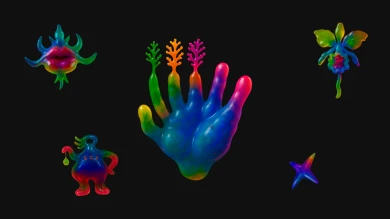
Cultural Work
Thursday, 12 February 2026 – 5:30pm
This series is organised by equipoMotor, a group of teenagers, young people and older people who have participated in the Museo Reina Sofía’s previous community education projects, and is structured around four themed blocks that pivot on the monstrous.
Session number two looks to approach film as a place from which cultural work is made visible and processes of production engage in dialogue with artistic creation. From this premise, the session focuses on exploring how audiovisual content is produced, assembled and distributed, from the hands that handle the images to the bodies that participate in its circulation. The aim is to reflect on the invisible effort, precarity and forms of collaboration that uphold cultural life, that transform the filmic experience into an act that recognises and cares for common work.
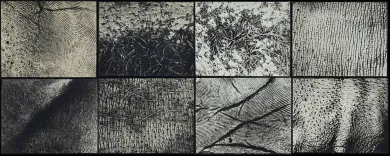
The (legal) person and the legal form. Chapter II
8, 12, 15 January, 2026 – 16:00 to 19:00
As part of the Studies Constellation, the Study Directoship’s annual fellowship, art historian and theorist Sven Lütticken leads the seminar The (Legal) Person and the Legal Form: Theoretical, Artistic, and Activist Commitments to foster dialogue and deepen the hypotheses and questions driving his research project.
This project, titled Unacting Personhood, Deforming Legal Abstraction, explores the dominance of real abstractions—such as exchange value and legal form—over our processes of subjectivation, and asks how artistic practices can open up alternative ways of representing or performing the subject and their legal condition in the contemporary world.
The seminar consists of eight sessions, divided into three chapters throughout the academic year. While conceived as non-public spaces for discussion and collective work, these sessions complement, nourish, and amplify the public program of the Studies Constellation.
In this second chapter of the seminar, the inquiry into the aesthetics and politics of legal form continues with three sessions that pick up the discussions held in Chapter I but propose new lines of flight. The first session focuses on international law via the writings of the British author China Miéville, which allows us to reconsider the notion of the legal form –following Evgeny Pashukanis— and, through it, a variety of (people’s) tribunals. While the crucial concept of the legal person –as the right-holder central to the form of law— was debated in Chapter I, the second session focuses on attempts to extend personhood not (just) to corporations, but rather to nonhuman animals or ecosystems. Finally, the third session poses the question: how can groups and networks use officially recognized organizational forms (such as the foundation or the cooperative) and/or use a collective persona (without necessarily a legal “infrastructure” to match) to act and represent themselves?

TEJA 2026. Open Call for Emergency Art Residencies
Proposal submission until 12 January, 2026
TEJA / Red de espacios culturales en apoyo a situaciones de emergencia [Network of Cultural Spaces in Support of Emergency Situations] has the mission to promote transnational cooperation by offering temporary art residencies to artists and cultural practitioners who find themselves in complex socio-political situations in their countries of origin. During their stay in Spain, residents receive accommodation, legal and psychological counseling, and access to a network of organizations and professionals with whom they can share, develop, and continue with their creative projects. The goal is to provide a safe and stimulating environment where artists can continue their work despite adverse circumstances and generate dialogue spaces that ensure freedom of expression through joint activities both in Spain and with international collaborators.
During 2026, TEJA hosts three new residencies, each lasting three months, dedicated to supporting artists and cultural practitioners residing in the West Bank and Jerusalem. In addition, in the second half of the year, TEJA hosts three additional residencies for Gazan artists, which are offered by invitation (as Spain is currently unable to facilitate evacuations from Gaza, these invitations are coordinated through France). These residencies aim to provide a stable, creative environment and foster artistic exchange in the face of ongoing adversities. Through this new program, TEJA reaffirms its commitment to amplifying Palestinian voices and empowering artists as they navigate these turbulent times.
The selection is carried out by the TEJA network in close collaboration with each hosting partner. This year the hosting partners are: La Escocesa (Barcelona), hablarenarte / Planta Alta (Madrid), Espositivo (Madrid), Institute for Postnatural Studies (Madrid), Casa Árabe (Córdoba). The selection prioritizes the artist’s personal and professional situation first, and then the alignment with the practices and themes of the hosting spaces. Proposal submission deadline is January 12th, 2026, 23:59 h.

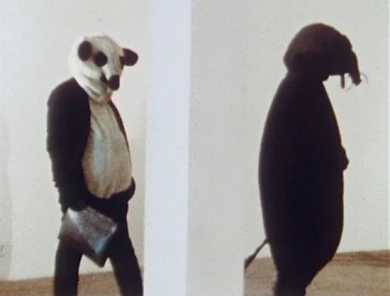
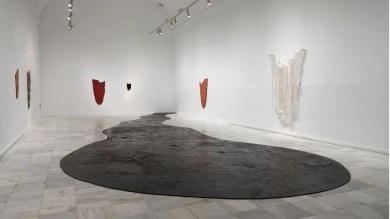
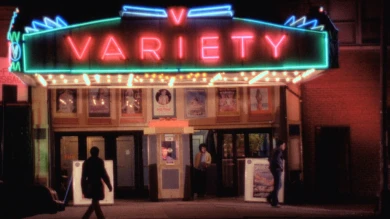
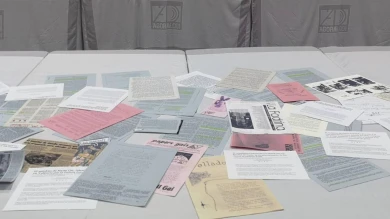
![Miguel Brieva, ilustración de la novela infantil Manuela y los Cakirukos (Reservoir Books, 2022) [izquierda] y Cibeles no conduzcas, 2023 [derecha]. Cortesía del artista](https://recursos.museoreinasofia.es/styles/small_landscape/public/Actividades/ecologias_del_deseo_utopico.jpg.webp)
![Ángel Alonso, Charbon [Carbón], 1964. Museo Reina Sofía](https://recursos.museoreinasofia.es/styles/small_landscape/public/Actividades/perspectivas_ecoambientales.jpg.webp)